Long COVID and the Stem Cell Sell
Stem cell clinics are advertising hope to long COVID-19 patients – whether their treatments have been proven safe and effective or not, Guananí Gómez-Van Cortright reports. Illustrations by Linda Amoruso and Laura Gleason.
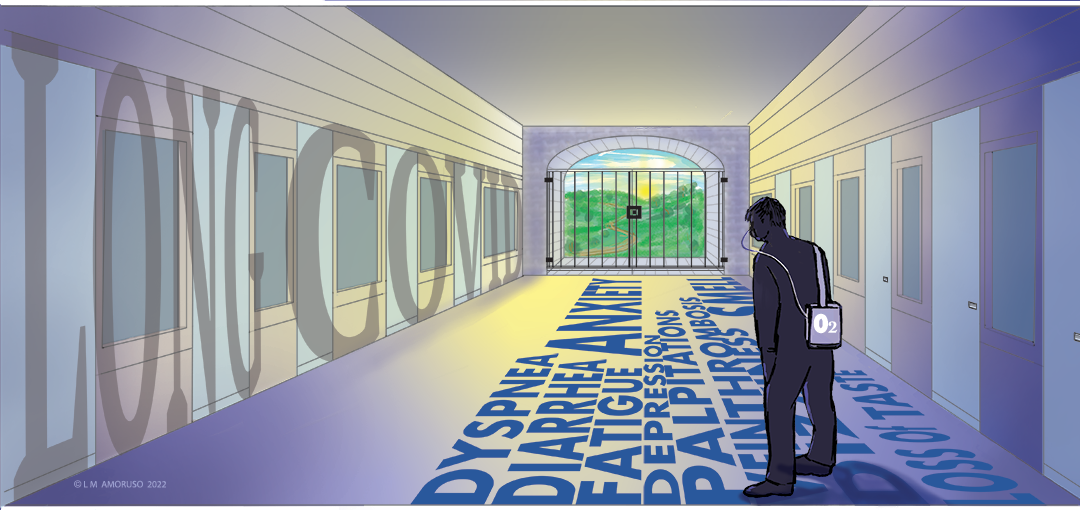
Many long COVID patients face several debilitating symptoms and a long road ahead. Illustration by Linda Amoruso
Three weeks after coming down with COVID-19, Colin Bennett woke up with a burning sensation coursing through his entire body. A hot, stabbing pain went through his chest, and his left arm had gone numb.
“I thought I had a heart attack,” Bennett says.
He rushed to the emergency room, only to have all his cardiac tests come back normal. The ER doctors sent him home, saying he would likely feel better soon.
Bennett, who is 34 years old and lives in Southern California, came down with an initially mild case of COVID-19 in August 2021. When his flu-like symptoms went on for more than two weeks and he began to experience new symptoms like dizziness and difficulty concentrating, Bennett suspected that something was seriously wrong. When he searched his symptoms online, he found that they matched those of long COVID patients.
“Some people have a mild case,” says Bennett. “But the potential is there to turn into something like me.”
New symptoms kept on coming: persistent tremors, bulging veins, exhaustion, vision changes, dry mouth, constant pins and needles in his feet, muscle weakness, heart palpitations. Bennett went to a series of different doctors, trying to rule things out and searching for a diagnosis or potential treatment.
As his array of symptoms persisted, daily activities like getting out of bed or taking a shower became an ordeal. Bennett went from working a challenging full-time job, golfing competitively and walking 30 to 40 miles per week to being unable to work and mostly staying in the house. He has now been sick for six months and counting.
“I cry every day,” Bennett says. “I wish I had known about long COVID before I got sick, and I can’t change it now.”
When he ran out of options offered by the medical establishment, Bennett sought out alternative treatments, including vitamin IVs and spending time in a hyperbaric oxygen chamber. Nothing seemed to make a difference.
In November 2021, a doctor friend in Mexico told Bennet she could bring an infusion of 130 million stem cells to California for him for $5,000, about half the price that a similar therapy would cost in the US. Bennett figured he had nothing to lose, so he agreed to pay for the stem cells and hope they might give him a semblance of his former life back.
“There are millions of people who have long COVID. I know five people personally who have committed suicide, it’s so bad,” says Bennett. “They don’t tell you how agonizing this is.”
Bennett is not the only long COVID patient seeking unproven or experimental stem cell treatments. The pandemic has left millions of chronically ill long COVID patients in its wake, and they are often ignored or failed by the healthcare system. This gives the unproven stem cell therapy industry a lucrative new line of business.
Stem cell clinics across the U.S. claim to offer therapies that can treat everything from arthritis to autism, preying on desperate patients by taking advantage of stem cells’ reputation as a miracle cure. Patients like Bennett spend time, money and limited resources on treatments that have not been shown to be safe or effective. Some die or suffer permanent injury.
“The central lie being sold by these companies is that there is one universal stem cell that can cure any ailment,” says Sean Morrison, head of the policy committee at the International Society for Stem Cell Research (ISSCR), a nonprofit organization that represents stem cell researchers. “As soon as COVID hit, there were companies advertising stem cell therapies for it.”
The Stem Cell Sell
Stem cell therapies have the potential to revolutionize medicine as we know it. In the past two decades, researchers have painstakingly developed stem cell treatments for a few specific ailments, such as severe combined immunodeficiency, a fatal immune disorder that afflicts children born with a rare mutation. But the overwhelming appeal of stem cells’ promise – that our own bodies contain the power to heal and restore us – has fueled an industry where exploitation and scams run rampant in response to demand for treatments yet to be developed or tested.
The Food and Drug Administration (FDA) has the power to regulate medical treatments, including stem cell therapies. But enforcing proof of safety and efficacy for stem cell clinics has proven to be a major stumbling block for the agency.
This regulatory gray area allows unscrupulous clinics to lure in patients who have been dismissed or failed by the health care system, especially those with chronic, complex conditions, including long COVID. Long COVID is devastating, yet poorly understood – scientists have yet to agree on a single term for the constellation of lingering symptoms, and research on diagnostic tools, possible causes, prevention, and treatments can’t come fast enough. These patients often turn to alternative medicine or begin searching online, where clinics sprinkle misleading kernels of scientific findings into their claims on websites, social media pages, and YouTube testimonials.
“There’s this entire marketplace out there that’s happy to take advantage of their suffering and desperation, or hope,” says bioethicist Leigh Turner, who has dedicated his career to tracking stem cell clinics across the U.S.
As the pandemic enters its third year, stem cell clinics have become increasingly common. Compared to their last survey of stem cell clinics in 2016, Turner and his colleagues found an increase from 570 to 2,754 clinics advertising stem cell therapies nationwide in the U.S. – about a fourfold increase in four years.
Most of the clinics offer to spin down stem cells from patients’ own bone marrow, fat cells, or blood, and then inject the concentrate into afflicted areas of the body. Many others use donated stem cell sources, including placental products such as amniotic fluid or umbilical cord blood. Some companies do not specify what kind of stem cells they use or where they get them from.
“There are a lot of clinics out there that are trying to take advantage of people’s hope and optimism, but also lack of knowledge,” says Kevin McCormack, director of patient advocacy at the California Institute of Regenerative Medicine (CIRM). “I get calls and emails every single day from patients, asking if we can offer them therapies for everything from arthritis to Alzheimer’s.”
Unproven stem cell treatments can have serious consequences. The harm caused by these clinics can be physical – such as multiple cases of severe infection at a clinic in Nebraska caused by poor sterile techniques, or three women in Florida who became permanently blind after stem cells were injected into their retinas to treat macular degeneration in 2017.
A 2021 study by the Pew Charitable Trust on adverse effects caused by unproven stem cell therapies found 360 cases of reported negative outcomes between 2004 and 2020. Patients reported tumors, serious bacterial infections, and organ failure after stem cell treatments, with 104 documented cases requiring hospitalization. The Pew study states that adverse effects are likely underreported.
But even in less egregious cases where therapies are simply ineffective, there is still financial and psychological harm. Stem cell treatments can cost as much as $10,000 per infusion, and are almost never covered by insurance.
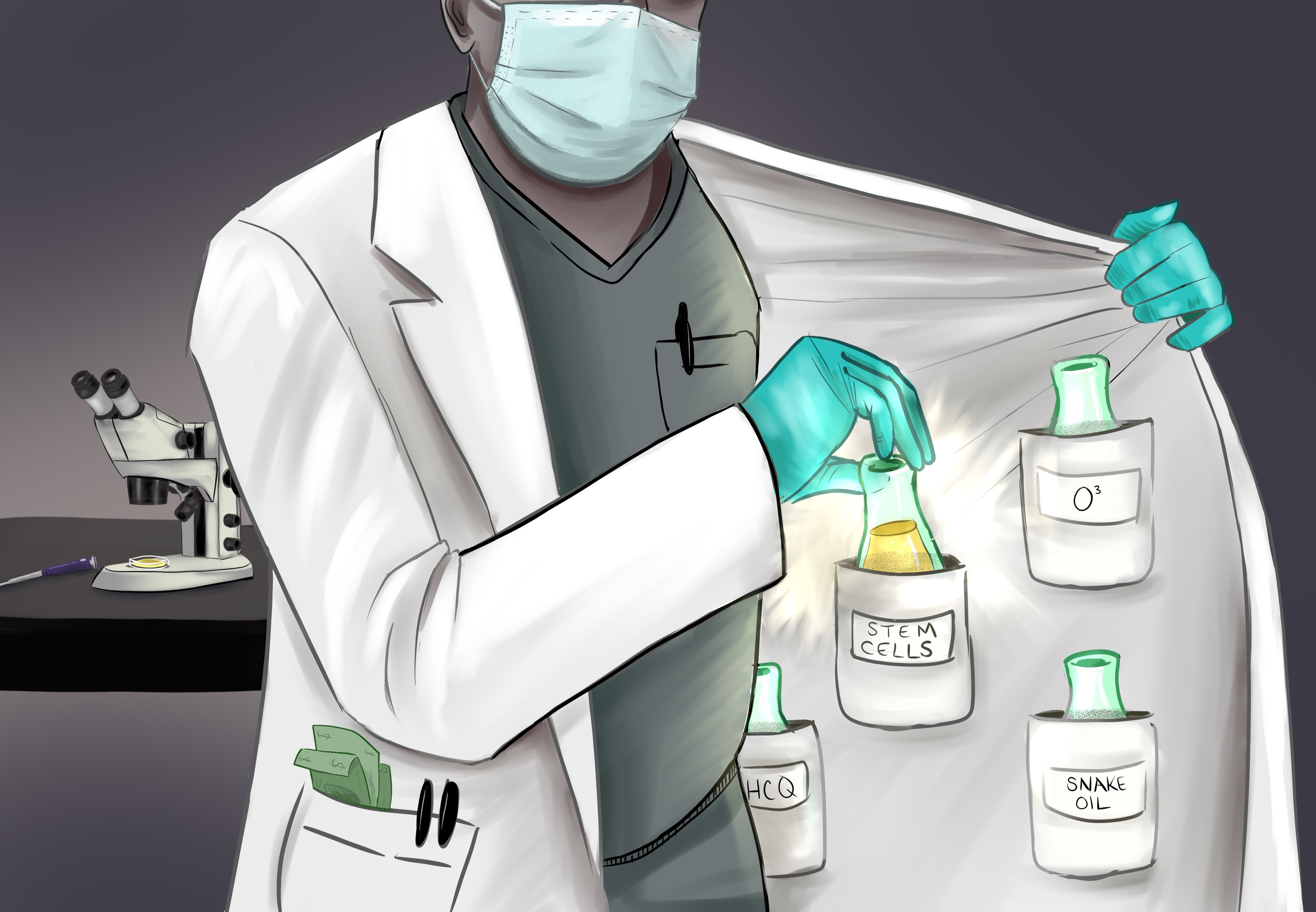
Stem cell clinics advertise treatments that have not been proven to be safe and effective. Illustration by Laura Gleason.
The Long Haul
The exact number of people who have long COVID is difficult to pinpoint, but a study reviewing more than 250,000 COVID-19 survivors in 57 different countries found that half of them experienced lingering symptoms six months after infection.
There is no consensus yet on how likely it is for someone infected with the coronavirus to develop long COVID – estimates from different studies range from 5 to 60 percent, depending on the definitions they use. Because of the incredible rate of coronavirus infections, however, even the lowest estimate of 5 percent would translate to 2 million Americans and almost 13 million people worldwide who will experience lingering symptoms for at least several months.
After paying $5,000 and receiving the stem cells in November 2021, Bennett felt no improvement. Instead, his condition continued to worsen. He estimates that he has spent a total of about $70,000 so far trying to get better.
In December, Bennett joined the NIH Recover study based out of Stanford, a $1.2 billion effort to track long COVID patients and collect information on symptoms and recovery over four years. Bennett calls the NIH study a joke, saying what he and other long COVID patients need is diagnostic tools, clinical trials, and treatments, not symptom gathering.
A friend who also has long COVID told Bennett his symptoms had improved after receiving an infusion of stem cells in a clinical trial. Bennett scoured clinicaltrials.gov for stem cell trials to participate in. He found one run by the same clinic his friend went to, Hope Biosciences, based in Sugarland, Texas. According to their page, Hope Biosciences was recruiting long COVID patients for a phase two clinical trial testing infusions of donated, fat cell derived stem cells. Bennett signed up, hoping the stem cells might help his body repair itself or alleviate symptoms like they did for his friend.
“No one really knows if it’s going to work or not,” says Bennett. “I highly doubt it’s going to help, but I have nothing to lose.”
Despite being a government website, the trial database clinicaltrials.gov is not monitored by any government agency. While the website contains many approved and legitimate trials, little is stopping unscrupulous clinics from uploading their own information with no one to check them. A disclaimer at the top of each trial page reads, “The safety and scientific validity of this study is the responsibility of the study sponsor and investigators. Listing a study does not mean it has been evaluated by the U.S. Federal Government.”
This caveat might go unnoticed by patients or families sifting through trial descriptions.
“A lot of these clinics have co-opted clinicaltrials.gov,” says Zubin Master, a bioethicist at the Mayo Clinic. “Firstly, clinicaltrials.gov is not policed in any way. It’s not a database that’s controlled by any government agency – it’s self-reported information.”
“It takes decades to develop a therapy that is proved to be safe and effective,” says Morrison. “Successful stem cell therapies are not delivered out of strip malls and are not just an injection.”
Red Flags and False Hopes
What makes these clinics insidious is the veneer of scientific credibility they use in their marketing. Many experts pointed out some of the telltale signs that a stem cell treatment is a scam.
“Clinical trials run by credible people never charge a fee,” warns Camilla Forsberg, a stem cell researcher who studies how blood cells are formed from bone marrow. “If somebody is charging you money, that means that they might be doing this for profit, and they couldn’t find the funding to do it as a controlled trial.”
According to Forsberg, treatments that are not covered by insurance are another red flag, since insurance companies usually refuse to cover any treatments that are not approved by the FDA.
Another red flag is treatments that sound too good to be true. Unscrupulous clinics tend to overemphasize the benefits of their treatments, while neglecting to mention any side effects or potential risks. Meanwhile, legitimate trials are required to disclose uncertainty and risk, and typically include a control group that receives a placebo.
“It takes decades to develop a therapy that is proved to be safe and effective,” says Morrison, the policy head from the ISSCR. “Successful stem cell therapies are not delivered out of strip malls and are not just an injection.”
Treatments that sound too good to be true should be avoided – though placing the responsibility of parsing out misinformation online onto desperate and extremely ill patients is unfair at best.
Regulating an industry that has proliferated to this extent is easier said than done. In 2017, the FDA announced a two-year regulatory grace period for stem cell clinics to provide evidence that their treatments were legitimate. The grace period was extended for a third year due to the pandemic, which simultaneously spurred a menagerie of COVID-19 treatment scams. Many stem cell clinics pivoted to advertising their products as prevention or treatment for COVID-19.
The Federal Trade Commission (FTC), which has the authority to punish companies for false advertising, responded by creating the COVID-19 Consumer Protection Act. The act makes it illegal to advertise or sell false treatments, tests, preventative measures, or cures for COVID-19. In 2020, the FDA and the FTC sent out 20 warning letters to stem cell clinics across the nation that claimed they could treat COVID-19 on their websites and social media platforms and demanded that they take down their ads.
Whether warning letters are effective in reducing COVID-19 stem cell scams remains to be seen.
Waiting for a Miracle
Bennett calls long COVID a ‘mass disabling event,’ leaving millions of people unable to work full time or pursue the future they once took for granted.
“I had a whole life ahead of me,” says Bennett. “I wanted to get married. I wanted to travel and play all the great golf courses of the world.”
Despite feeling exhausted and ill, Bennett traveled alone from Southern California to the Hope Biosciences clinic in Sugarland, Texas, where he received an hour-long IV infusion of either donor stem cells or a placebo. Three weeks later, Bennet has not noticed any changes in his symptoms or day-to-day quality of life.
Bennett trusts the trial because it was listed on clinicaltrials.gov, has FDA approval according to Hope Biosciences’ website, and uses the same stem cell infusions previously tested in the clinic’s trials for Parkinson’s and multiple sclerosis. Hope Biosciences states that this trial is FDA approved, though certain details point toward questionable conduct. The clinic has been using the same stem cell infusion to treat eight different ailments in 20 listed clinical trials since 2020, but has not posted results from any of these trials on clinicaltrials.gov. The clinic is using a 501c3 nonprofit arm of their for-profit cell storage business to run these trials, and advertises access to patients for other companies looking to conduct trials on their website.
Hope Biosciences did not reply to requests for comment on their stem cell long COVID trials.
Bennett did not pay to participate in the trial. Hope Biosciences did not pay him or reimburse the estimated $600 of airfare and other travel expenses it will cost Bennett to get to the Texas clinic for the trial’s four rounds of infusions. Despite the expense and effort of traveling while ill for the experimental treatment, Bennett feels he has little to lose since there are no other long COVID treatments available anyway.
“I have no future,” says Bennett. “I’m just sitting here waiting for a miracle, basically.”
Until there is robust scientific understanding and proven treatments for long COVID, patients with no other options will keep seeking out unproven experimental therapies. If stem cell clinics remain a dominant source of hope, they will continue to profit at the expense of patients who desperately need it.
© 2022 Guananí Gómez-Van Cortright / UC Santa Cruz Science Communication Program
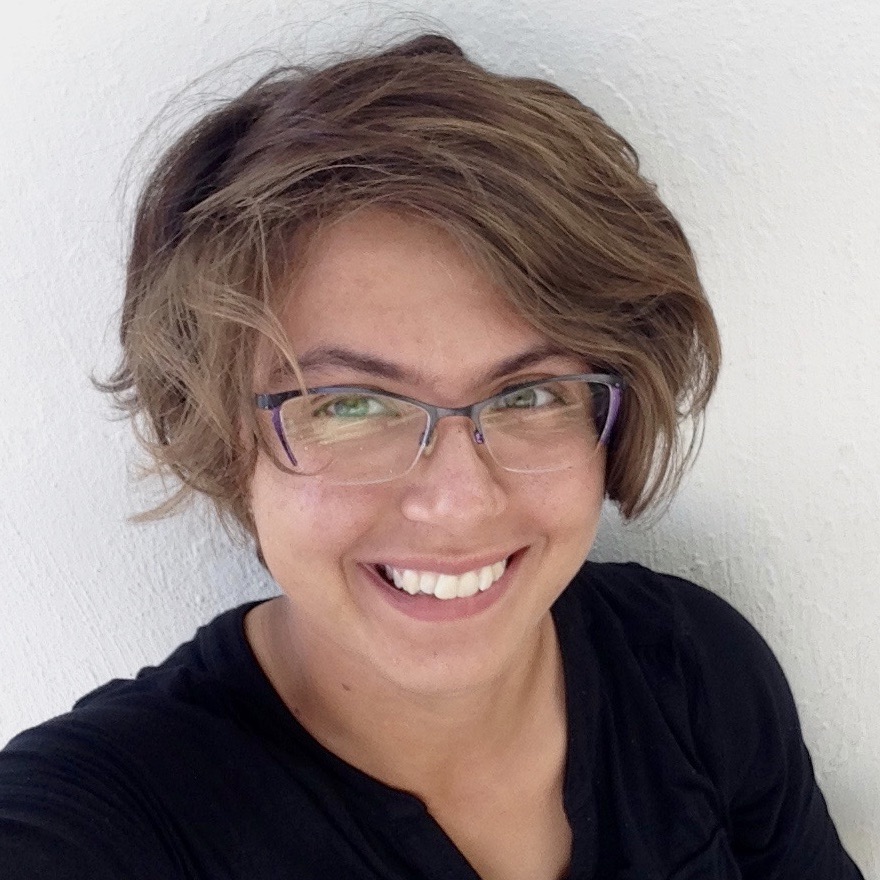
Guananí Gómez-Van Cortright
Author
B.A. Biology, Reed College, Portland, OR
Internships: Santa Cruz Good Times, KQED, Bay Nature
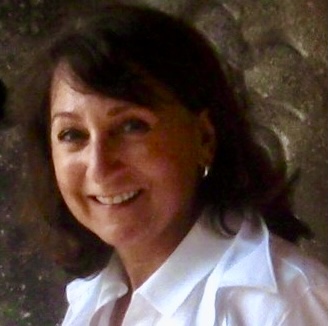
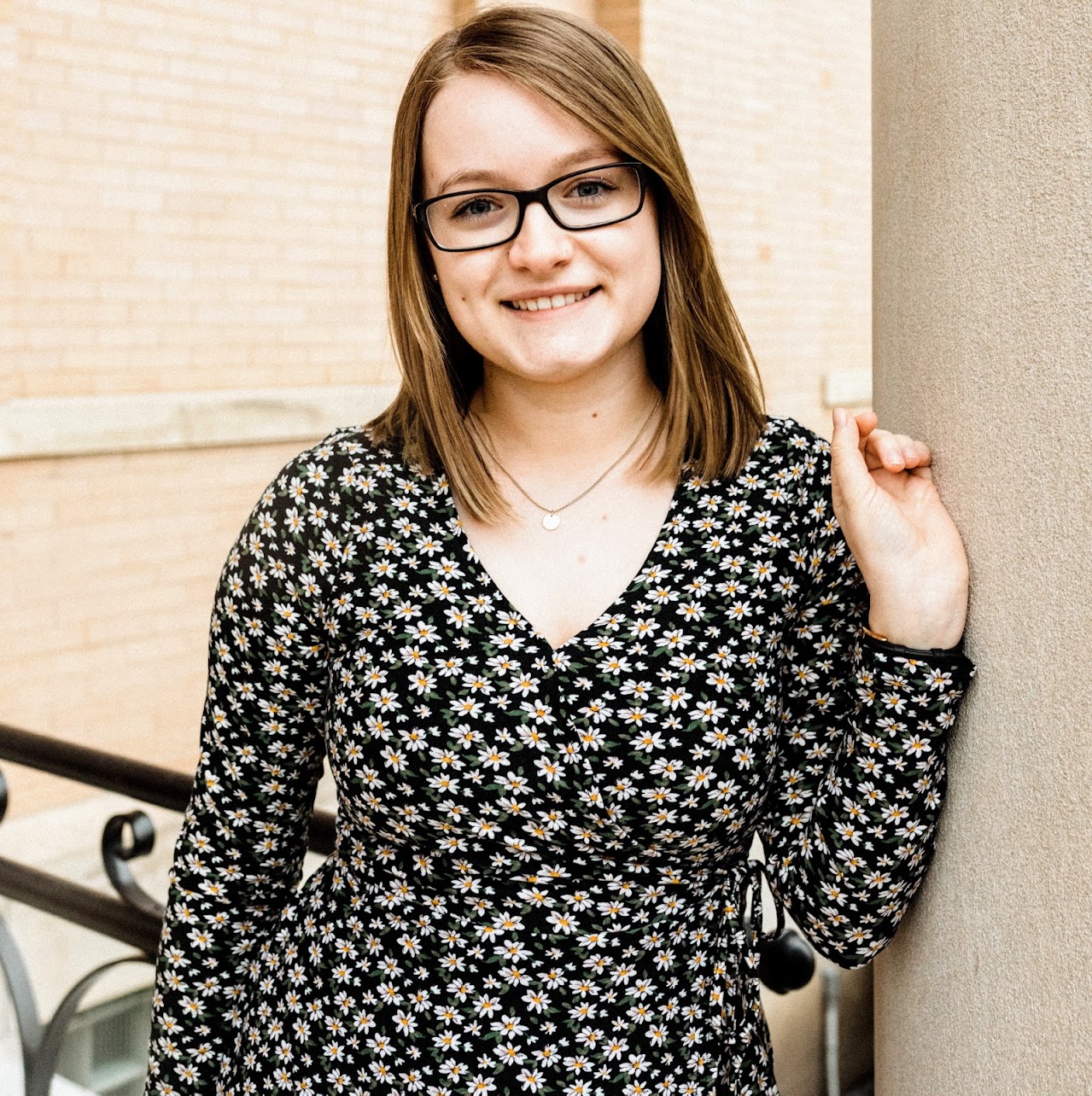
I am one desperate long covid jabbed injury
, like you I have search for magic treatments for this debilitating cascading symptoms!!
I am suffering from long covid neurologic conditions as well, to the point I’m walking like a Zombie. I pray for all the long covid people who have been impacted by this auto-immune diseases 🙏🏽
To the writers of this article,
We never received any requests for comments from you or your institution.
Many of your statements made about the Hope Biosciences Research Foundation are incorrect.
If you wish to correct your article, please email me.